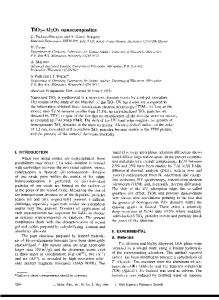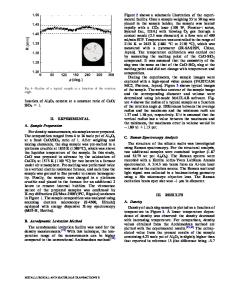Effect of Processing Parameters on Thermal Cycling Behavior of Al 2 O 3 -Al 2 O 3 Brazed Joints
- PDF / 1,633,870 Bytes
- 8 Pages / 593.972 x 792 pts Page_size
- 70 Downloads / 408 Views
CTION
ADVANCED ceramics such as alumina (Al2O3), aluminum nitride (AlN), zirconia (ZrO2), silicon carbide (SiC), and silicon nitride (Si3N4) are becoming essential for high-power electrical engineering, mechanical engineering, and atomic energy-based industries as ceramics are chemically and mechanically more stable than metals with respect to hardness, abrasion, wear, stiffness, and corrosion resistance. However, fracture toughness of ceramics is poorer than metal. Ceramic to ceramic brazing is required for structural applications of various high-power microwave generator devices such as TWT, klystron, and gyrotron. Conventional brazing techniques are not suitable for recent high-power applications because the wettability of filler alloy on the ceramic material is usually very poor. The wettability can be improved by adding a small amount of active metals such as titanium, zirconium, vanadium, and chromium in the filler material.[1–5] Titanium-based active metal braze alloys have been used by many researches for the joining of ceramic materials.[6–9] In the active metal brazing process, bonding is enhanced by the active elements of filler alloy, which reacts with anions of ceramics at certain brazing temperature and forms different phases NANDADULAL DANDAPAT, Project Expert, is with the Bioceramics and Coating Division, CSIR-Central Glass and Ceramic Research Institute, 196, Raja S.C. Mullick Road, Kolkata 700 032, India, and also with the Department of Physics, Indian Institute of Engineering Science and Technology, Shibpur, Howrah 711103, India. SUMANA GHOSH, Sr. Scientist, SOMESWAR DATTA, Advisor, and VAMSI KRISHNA BALLA, Sr. Principal Scientist, are with the Bio-ceramics and Coating Division, CSIR-Central Glass and Ceramic Research Institute Contact e-mail: [email protected] BICHITRA KUMAR GUHA, Professor, is with the Department of Physics, Indian Institute of Engineering Science and Technology. Manuscript submitted January 13, 2016. Article published online June 30, 2016. 2946—VOLUME 47B, OCTOBER 2016
of active metal oxides leading to strong bond formation.[10–12] Bang et al.[13] classified potential reaction products of alumina and the Ti present in the filler alloy. There are many processing parameters that can improve the performance of the ceramic brazed joints. Das et al.[14] studied the influence of temperature, pressure, and bonding time on the properties of the alumina–kovar joint using aluminum as a filler material. The reaction layer was observed to be increased with the increasing bonding time.[6] Hao et al.[15] studied the effect of brazing temperature and holding time for ceramic to ceramic joining. Liu et al.[16] reported the effects of processing parameters on the interfacial properties of the ZrO2 and Ti alloy joint using Ti-based filler. They also found that the maximum brazing strength could be achieved by decreasing brazing cooling rate and using filler alloy of suitable thickness. We have already studied the joining of alumina–alumina, alumina–graphite, and alumina–monel superalloy by active metal br
Data Loading...











